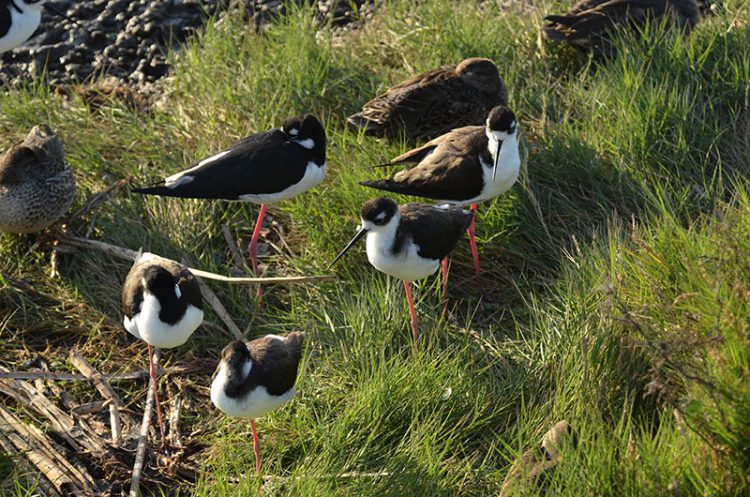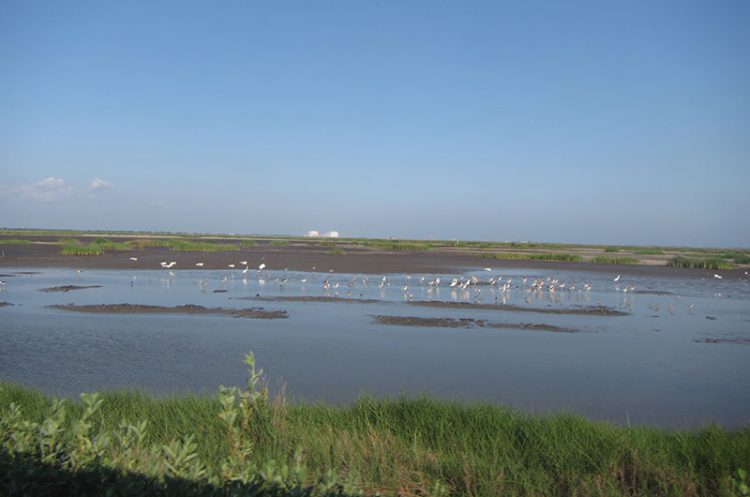Full Title: Restoring coastal wetlands for shorebirds: Leveraging lessons learned to identify research priorities and strategies to maximize future success
This project developed a research and application plan to incorporate elevation profiles into restoration projects to enhance shorebird habitat in the Salt Bayou ecosystem on the upper Texas coast.
Lead Investigator: Anna R. Armitage, Texas A&M University at Galveston, armitaga@tamug.edu
Natural Resource Manager: Stephen McDowell, Texas Parks & Wildlife Department, J.D. Murphree Wildlife Management Area
Federal Program Officer/Point of Contact: Frank Parker (frank.parker@noaa.gov)
Award Amount: $122,346
Award Period: September 2021 – August 2023
Why it matters: Coastal wetland restoration plays an important role in rehabilitating wildlife populations, such as migratory and resident shorebirds, by providing foraging and roosting habitat. Shorebird selection and use of restored habitat is closely linked to the level of variability in habitat types with changes in elevation, such as shallow pools or mudflats. However, current restoration projects typically focus on establishing emergent marsh vegetation, often employing beneficial uses of dredge material techniques to bring degraded areas to an elevation appropriate for vegetation growth. Generally, projects do not intentionally introduce small variations in elevation that could enhance shorebird use. The Salt Bayou ecosystem in Texas has been the site of several wetland restoration projects employing beneficial uses including the restored brackish marshes in the J.D. Murphree Wildlife Management Area. As new restoration projects are planned, natural resource managers want to know: How can elevation profiles of beneficial uses restoration projects be designed to enhance shorebird use?
What the team did: The project team interviewed users of the Salt Bayou ecosystem and individuals from federal and state agencies, non-governmental agencies, universities, and private industry in Texas and Louisiana. Following these conversations, the team identified and synthesized available data that quantified bird use of the Salt Bayou ecosystem. The team also assessed stakeholder observations about bird use of restored wetlands and key knowledge gaps for wetland restoration and management of coastal birds.
Summary of outcome: With the bird assemblage data the team identified, they found that restoration sites with higher habitat heterogeneity and more extensive tidal flats tended to have more bird species compared to those with less variation in elevation. The interviews also provided a strong indication that restoration projects should incorporate elevation changes into their plans to enhance shorebird use of the restored area. The conversations highlighted the importance of comprehensive monitoring programs to both inform elevation guidelines before restoration work begins and monitor success after.
How effective is dredge material at restoring foraging habitats for coastal birds?, Coastal and Wetlands Ecology Lab, Texas A&M University
Not applicable
 Official websites use.gov
A .gov website belongs to an official government organization in the United States.
Official websites use.gov
A .gov website belongs to an official government organization in the United States.
 Secure .gov websites use HTTPS
A lock or https:// means you’ve safely connected to the .gov website. Share sensitive information only on official, secure websites.
Secure .gov websites use HTTPS
A lock or https:// means you’ve safely connected to the .gov website. Share sensitive information only on official, secure websites.


